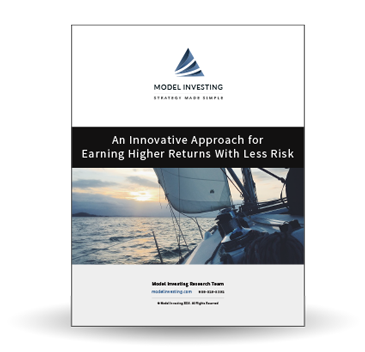 Stocks? Bonds? Cash? Where should your money be invested?
Stocks? Bonds? Cash? Where should your money be invested?
Over the last few decades it has become commonplace to talk about stocks and bonds from a fixed allocation perspective. That is, you should have a certain percentage of your portfolio in stocks, and a certain percentage in bonds.
You’re probably familiar with the traditional theory that says you should be positioned mostly in stocks as a young individual, then gradually transition your portfolio to bonds as you get older and approach retirement. Those in retirement should be heavily invested in bonds because they carry less “risk.”
This approach to portfolio management has become ingrained in our society; however, it is a dangerous way to approach investing.
The Dangers of Fixed Allocations
The dangers of always having a portion of your investments allocated to stocks and bonds stem from two sources. First, those following this outdated approach will experience a major performance drag from the constant exposure to bonds. Second, stocks and bonds both carry substantial risk, and fixed allocations to either will eventually result in major losses during periods of market turmoil.
Let’s take these two issues in turn.
Think about this for a moment: An investor with an initial balance of $100,000 who earns a 6% return each year for 30 years, ends up with a portfolio worth $574,349. If that same investor were able to earn an additional 2% per year, their balance at the end of 30 years would be $1,006,265. That’s a difference of nearly $432,000. Think you could find something to do with that extra cash? It may not seem like earning 2% less per year amounts to much, but as you can see, it makes all the difference in the world.
Bonds are typically included in a portfolio for diversification purposes. Holding bonds in addition to stocks can reduce overall volatility and help protect against occasional sharp declines in stock prices. But the trade off to this approach comes in the form of lower overall returns, sometimes by a difference much greater than the 2% figure used in the example above.
I want to show you a very important chart and encourage you to spend a long time studying it. The chart below, courtesy of Jeremy Siegel, Professor at the University of Pennsylvania and author of Stocks for the Long Run, demonstrates how different asset classes have performed over time. This long-term chart shows us the real, inflation adjusted returns of major asset classes going back more than 200 years.
Notice that the annualized return for stocks over that time (6.7%) is 3.2% higher than that of bonds (3.5%). We just looked at what a huge performance drag missing out on a 2% return per year can be, imagine the effect when you miss out on 3.2%! Do you really want to have a substantial portion of your portfolio always allocated to an asset class that exhibits consistent underperformance?
I want to drive this point in further before we move on. To the untrained eye, the chart above may make it appear that bonds performed about half as well as stocks. That is absolutely not the case. The chart above is a logarithmic chart, as opposed to the linear charts most people are accustomed to seeing. What this means is that each notch on the vertical axis increases not by a fixed amount, but by a factor of 10. We can understand the implications of this by looking at the end values from investing $1 in each of the asset classes.
A $1 investment in stocks turned into $930,550. Contrast this with $1 invested in bonds, which turned into a mere $1,505. Over the time period in question, stocks outperformed bonds by 618 times. We’re not talking about some mild performance drag from bonds, we’re talking about a potentially life changing impact.
Now let’s move on to the second, and more worrisome reason behind why a fixed asset allocation approach to investing is dangerous: Fixed allocations to either stocks or bonds will eventually result in major losses during periods of market turmoil.
Almost everyone knows that stocks are subject to large swings and can lose value quickly. Since 2000, stocks have lost over half their value … twice. A fixed asset allocation strategy all but ensured that investors suffered major setbacks during these trying periods, as their money was allocated to stocks regardless of performance. I don’t know about you, but an investment strategy that maintains constant exposure to stocks when they are plummeting in value doesn’t make a whole lot of sense.
Stock market volatility is well known, so I don’t want to spend a lot of time on it. There is another concern out there that warrants more of our attention: the bond market.
Many people make the implicit assumption that bonds are safe. The truth is that bonds carry significant risks and can collapse in value just like stocks. To verify this, let’s take another look at the wonderful chart above. Conceptually, first notice that bonds (the purple line) have a habit of falling in value from time to time, just like stocks.
When an asset’s price declines considerably, one of the ways we can understand the magnitude of the collapse is to look at what’s called maximum drawdown. This metric tells us, on a percentage basis, how far the asset’s price fell from its highest point to its lowest point. Historically, both the U.S. and the U.K. have seen bond price declines in excess of 60%. That’s a greater loss of value than occurred with stocks during both the dot-com collapse and the financial crisis. While we have not seen a drawdown of similar magnitude in recent decades, it does not make the risk any less real.
Also notice in the chart above that bonds continuously lost value from 1940 to 1981. That’s over forty straight years of bonds declining in value. Think about that. During those four decades, rising interest rates eroded the value of bonds to the point where even the interest being earned could not create a positive total real return.
Bonds have been a good investment for the last three decades, but that’s primarily a result of consistently falling interest rates. With interest rates having recently hit unprecedentedly low levels, they could move higher in the years ahead. If they do, it’s going to represent a tidal shift in average bond returns, and many unsuspecting investors are going to be caught in the mess.
At this point I hope that you are beginning to see some of the drawbacks of maintaining constant exposure to stocks and bonds. By following the traditional approach of fixed asset allocation, you are earning less than you could, and you are exposing yourself to considerable risk.
An Innovative Alternative: Dynamic Asset Allocation
Now here’s the part you’ve been waiting for – there is a better alternative. In recent years, a new approach has emerged which looks at asset allocation from a completely different perspective. It’s called dynamic (aka. tactical) asset allocation.
Before going further, I want to caution you that the term “dynamic asset allocation” can have multiple meanings depending on who you talk to. Investment professionals who follow a fixed asset allocation approach will sometimes refer to dynamic asset allocation as the process of rebalancing a portfolio back to its original “fixed” allocations once market performance has caused deviations. As I have hopefully already conveyed, a fixed asset allocation strategy has significant drawbacks, which any form of continual rebalancing cannot overcome.
At Model Investing, and for today’s top portfolio managers, dynamic asset allocation has a completely different meaning. Synonymous with tactical asset allocation, dynamic asset allocation refers to the strategy of shifting allocations between asset classes based on evolving economic and financial conditions. Instead of maintaining fixed allocations regardless of performance, we move freely from one asset class to the next, always seeking out the top performing investments.
There are times when stock prices are rising quickly and stocks are the ideal place to be. As you can infer from the chart above, stocks are generally the best place to have your money over the long run because they consistently generate the highest returns. However, there are also times when exposure to the stock market is suspect, and bonds are the best alternative. The financial crisis was a perfect example of this.
Leading up to the financial crisis, stocks were outperforming bonds by a wide margin. As a result, they were the ideal asset class to be positioned in, and any allocation to bonds was acting as a performance drag. However, as stocks began to lose value during the crisis, bonds became the top performing asset class and shielded investors from significant losses. Those who stayed allocated to stocks saw their wealth evaporate, while savvy investors transitioned their portfolios to bonds to ride out the storm. As stocks hit their bottom in 2009 and began to rise, those same smart investors moved their money out of bonds and back into stocks to once again take advantage of sharply rising stock prices.
The Model Investing Approach
You may be wondering how this is possible. How did some investors know to move money from stocks to bonds and back to stocks in order to sidestep major losses, while still participating in the bulk of the gains? The answer is that they did it by carefully monitoring changes in key economic and financial indicators that provided advanced warning of what was to come.
At Model Investing, this information is now at your fingertips. We’ve developed a series of investment models that encapsulate this critical information and create optimal portfolio allocations, allowing you to take advantage of this innovative approach to investing. No matter what your net worth or level of expertise, these models can raise your game (and account balances) to a whole new level.
In closing, I want to warn you that in the changing financial conditions that lay ahead, there may be a time when both stocks and bonds suffer severe losses simultaneously. This generally has not been the case historically, but we have and are continuing to see unprecedented developments in global financial markets.
In this situation, the best place to have your money may be in the safety of cash. That probably sounds strange, considering cash generally loses value over time and is a poor store of wealth, but in a deflationary environment, cash can be your best friend. I say this to emphasize that the asset allocation decision is not always between stocks and bonds. To navigate future conditions, you may also need to recognize when neither are appropriate. Luckily for you, our investment models are designed to take this into account.




